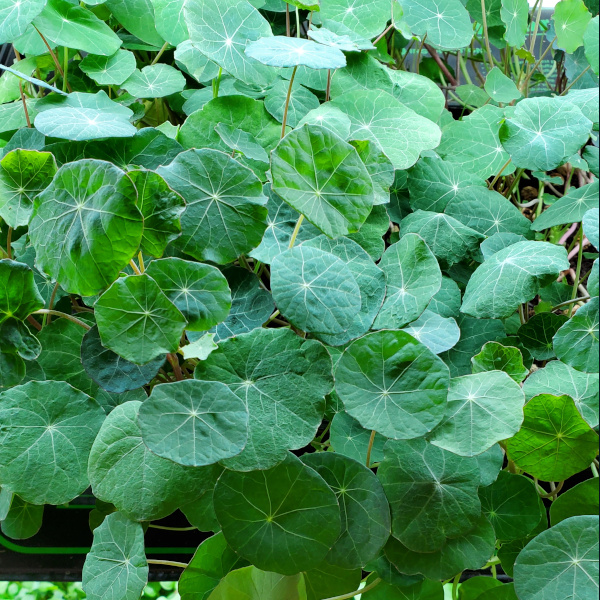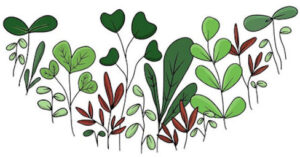Nasturtium

Nasturtium is actually a variety of flower belonging to the plant classification Tropaeolum, and there are more than 50 different kinds. At maturity, nasturtium is a bright orange and red flowering plant which originates in the Andes mountains of South America, from Venezuela to Argentina.
They have light pink to yellow stems and large dark green leaves. Many varieties can be grown as microgreens or shoots. The most popular are Jewel, Whirlybird, Alaska, and Empress of India. Nasturtium takes longer to grow than most other microgreen varieties, with an average of 14 to 21 days from planting to harvesting.
Nasturtium, Latin nasus tortus, meaning “twisted nose,” which some believe is a reference to what you would do when you smelled or ate their pungent leaves. They have a delicious flavor, starting off sweet and finishing with a powerful peppery taste and spicy flavor—very similar to mustard spice and wasabi.
The leaves are scientifically proven to be very medicinal and is used to improve the immune system, tackle sore throats, coughs, and colds, as well as bacterial and fungal infections—one of the most nutritious plants known—and they make a delicious tea. Nasturtium contains vitamins A, B-complex, and C, as well as calcium, potassium, antioxidants, fiber, and copper.
Vitamin A – a powerful anti-oxidant and is essential for vision and for maintaining healthy mucosa and skin
Vitamin B – especially folate which is necessary for pregnant women. It helps to protect babies from developing neural tube defects, assist in the mother’s circulation, and aids in stress relief
Vitamin B3, Niacin – helps lower LDL cholesterol levels in the body, and along with riboflavin, thiamin, pyridoxine, and folates which are also found in borage, functions as a co-factor in enzymatic metabolism
Vitamin B6 – also known as pyridoxine, is a water-soluble vitamin that your body needs for several functions. It’s significant to protein, fat and carbohydrate metabolism and the creation of red blood cells and neurotransmitters. It may reduce depression and Alzheimer’s risk, as well as promote brain health. It may also prevent anemia, treat symptoms of PMS, reduce nausea during pregnancy, reduce risk of heart disease, prevent cancer, promote eye health, and reduce the reduce inflammation associated with rheumatoid arthritis.
Vitamin C – As previously mentioned pea shoots are rich in vitamin C which can reduce the risk of infections and pneumonia, help to lower the risk of stroke, and can reduce the risk of developing cancer and cardiovascular disease, which is possibly linked to the anti-inflammatory properties of the vitamin. Other benefits of Vitamin C include reduction in macular degeneration that leads to eye disorders, speedier wound healing, reduction in asthma symptoms caused by air pollution, better processing of glucose and insulin, and promotion of neurotransmitter production which could help to regulate mood.

